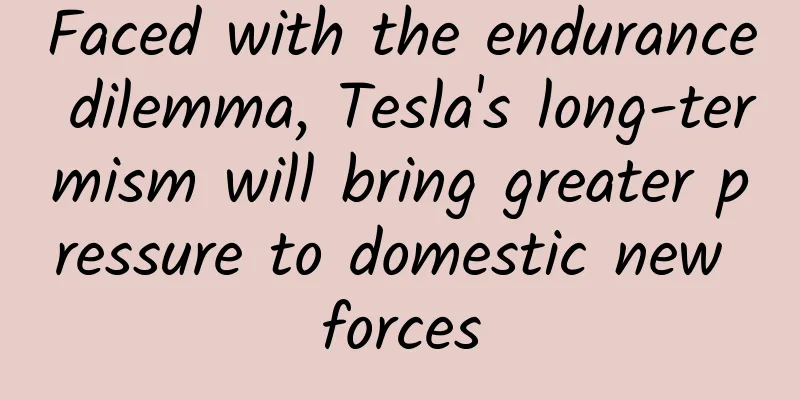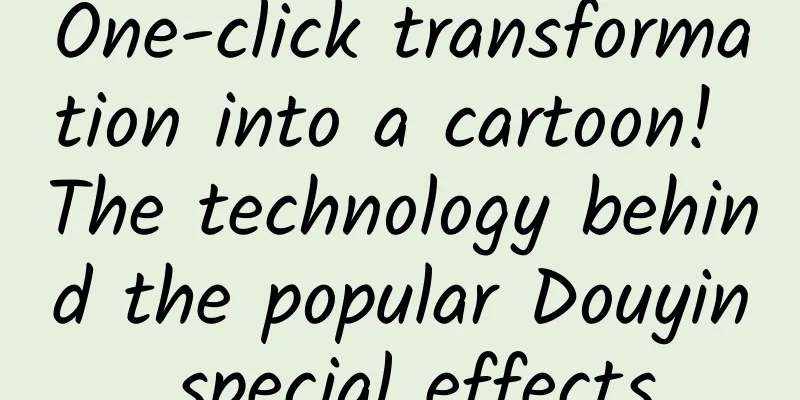Faced with the endurance dilemma, Tesla's long-termism will bring greater pressure to domestic new forces

|
After being delayed for half a year, Tesla's "Battery Conference" was finally held a few days ago. Although Musk introduced many of Tesla's brilliant technologies at the conference, it was regrettable that the 1 million-mile battery that Musk had been preheating for a long time did not appear. Instead, he began to talk about the grand vision of "reducing the production cost of batteries per kilowatt by 56% and making Tesla affordable for more people", which also caused Tesla's stock price to fall by 5% after the conference. No explosive technology emerged, and the central idea of the conference became "cost reduction." As the recognized leader in new energy vehicles around the world, Musk's choice actually reflects the dilemma of today's new energy vehicle market. Pure electric dilemma To this day, new energy vehicles still have fatal product defects in energy storage and charging. From the perspective of energy storage, although the lithium batteries of new energy vehicles can be charged at any time, their ability to store energy per unit volume is very limited. The energy density of each kilogram of lithium-ion battery is only 0.72MJ, while the energy density of the same weight of gasoline can reach 47.3MJ. A major problem this brings about in terms of experience is range anxiety. Taking Tesla's popular Model 3 as an example, its ideal range on a full charge is 668 kilometers, but considering the complex factors such as weather and road conditions that car owners encounter when actually on the road, it is difficult for most car owners to reach the nominal value. The opposite of energy storage is charging time. Since lithium batteries cannot be physically "transferred" like gasoline vehicles, the charging time is often calculated in hours. Although new energy vehicle manufacturers are currently focusing on fast charging technology, because the standards for fast charging are not unified, fast charging piles are difficult to be used at any time, and most fast charging technologies can only be turned on when the battery is low, which invisibly increases the cost of use for car owners. Previously, a blogger named "Weekend Travel" revealed that he drove the NIO ES 8 for more than 300 kilometers to travel to Jiangsu, Zhejiang and Shanghai. However, due to the defects of the NIO ES 8 in energy storage and charging, he "did a 'good result' of more than 6 hours, so his friends waited for him for more than two hours at the destination." Of course, faced with this dilemma, car companies can also follow the law of "technological explosion" and leave the advancement of battery technology to time, but unfortunately, due to the physical and chemical properties of lithium batteries themselves, it is difficult for new energy vehicles to make major breakthroughs in cruising range in the short term. Tesla has been established for nearly 20 years and has always been centered around lithium batteries. In the new energy vehicle market of the past two years, the three seemingly hot energy directions of ternary lithium, lithium iron phosphate, and blade batteries are nothing more than taking safety into account while following a unified product path to reach the ceiling of lithium battery energy as much as possible. From this point of view, let’s look at Tesla’s frequently preheated battery technology with a range of 1 million miles. In fact, it is nothing more than launching a “big satellite”. From mileage competition to cost reduction Precisely because the new energy vehicle industry has fallen into such a dilemma, at Tesla's "Battery Conference" in 2020, Musk no longer over-promoted the range and charging speed of his own products, but instead focused on "reducing costs." At the battery level, Tesla's new 4680 anode-free battery costs about 14% less than the previous generation. And the cathode material of the battery has shifted from scarce and expensive cobalt to nickel, which means that Tesla's future production capacity is no longer linked to cobalt production. In terms of vehicle production, Tesla plans to transform its automotive technology, reduce parts as much as possible, and integrate the battery with the vehicle body, which will not only make Tesla's vehicles cheaper, but also effectively increase the design space of the vehicle. Interestingly, in addition to Tesla, domestic upstream supply chains, Ningde and BYD have also previously revealed new energy product strategies that integrate batteries and vehicle bodies. It is worth noting that in response to the current battery pollution problem after the scrapping of new energy vehicles, Tesla also plans to recycle them through its own factories. Of course, in addition to the lofty concept of environmental protection, Tesla's biggest concern is actually because recycling batteries can "reduce costs." Official data shows that in 2020, the cumulative number of retired power batteries in China will exceed 200,000 tons (about 25GWh), of which 60,000 tons will need to be scrapped. The market price of electrolytic nickel can reach 117,300 yuan per ton. If Tesla can buy these scrapped batteries at a low price and then extract useful battery metal materials, it will undoubtedly further lower the price of Tesla products. Based on various technological advantages, Musk announced that Tesla's new car priced at only US$25,000 (about RMB 170,000) will soon be available, and emphasized: "The US$25,000 model will apply these battery technologies, and we want to make electric cars affordable to more people." Corresponding to reducing costs and expanding the upstream industrial chain, Musk also emphasized that Tesla will produce 20 million cars in three years. It can be said that after seeing that new energy technology is approaching its ceiling, Musk did not go all out on the "one-million-mile battery", but flexibly shifted the product focus to cost control, hoping to use Tesla's brand accumulation to exchange space for time, and hope to break the new energy dilemma through coordinated development with the industrial chain. Domestic new forces are under great pressure Musk emphasized that Tesla will build factories around the world in the future, and the Shanghai Tesla factory will have an annual production capacity of one million vehicles. There is no doubt that China is one of Musk's most important markets. This is not good news for a number of domestic new power manufacturers. From a market perspective, Tesla is currently focusing on the price segment of around 300,000 yuan. As domestic Teslas have repeatedly cut prices, data from the China Passenger Car Association shows that in the first half of 2020, Tesla delivered a total of 45,754 Model 3s in China, which is higher than the combined performance of the second to fifth place. However, it is worth noting that among the top ten new energy vehicles in China in the first half of 2020, only Tesla Model 3 and NIO ES6 are priced above RMB 300,000, while the rest are priced below RMB 200,000. Once Tesla's new energy vehicles priced below RMB 200,000 enter the market, they will surely further occupy the market space of domestic new forces. Secondly, related to the charging efficiency of new energy vehicles mentioned above, after Tesla cars are "sunk" and sold in large quantities, it can also reversely promote the utilization rate of Tesla super charging piles. Therefore, Tesla will certainly build more super charging piles according to market demand. Previously, Tesla has revealed that it plans to build 4,000 super charging piles in China by the end of this year, which is higher than the total number in the past five years. Relying on its cost advantage, Tesla has frequently explored the market that previously belonged to domestic new forces. Tesla has taken advantage of its quantity advantage to lay a wide range of super charging piles, which to some extent greatly compensated for the disadvantages of new energy vehicles in charging, thereby creating a relative advantage in product experience. More importantly, Tesla's move can be described as waiting for the opportunity to work, using its quantity advantage to extend the timeline between Tesla and technological progress, and wait for industrial technological breakthroughs while ensuring its own product advantages. This is tantamount to a "mountain of pressure" for the newly started domestic new forces. As Tesla also starts to reduce costs, shouldn’t domestic new electric vehicle manufacturers work a little harder? As a winner of Toutiao's Qingyun Plan and Baijiahao's Bai+ Plan, the 2019 Baidu Digital Author of the Year, the Baijiahao's Most Popular Author in the Technology Field, the 2019 Sogou Technology and Culture Author, and the 2021 Baijiahao Quarterly Influential Creator, he has won many awards, including the 2013 Sohu Best Industry Media Person, the 2015 China New Media Entrepreneurship Competition Beijing Third Place, the 2015 Guangmang Experience Award, the 2015 China New Media Entrepreneurship Competition Finals Third Place, and the 2018 Baidu Dynamic Annual Powerful Celebrity. |
<<: Behind the skyrocketing memory prices is an endless war you can’t see
Recommend
Squirrels can't speak bird language, so how come they are so interested in listening to the birds chatting next door?
Nature is not a very friendly place for small ani...
Are there only elephants in Asia and Africa? This is a "historical" misunderstanding | World Elephant Day
If you were asked what is the largest land animal...
How to find operational guidance to leverage user growth?
As an operator , you always need to keep in mind ...
Smartphone market to grow 12% in 2021, chip shortage may be a hindrance
The latest forecast from research firm Canalys in...
Bidding Models in Internet Advertising - Alliance, RTB, RTA
In (Part 1 - Basic Bidding) and (Part 2 - Smart B...
If you were given 100,000 yuan, would you buy the Southeast DX3 pure electric car or the top-of-the-line fuel car?
According to official news from Southeast Auto, S...
Analysis of ideas and steps for writing online promotion plans
Internet promotion, a promotion method that requi...
How does a frog's slippery tongue catch a fly?
When it comes to frog hunting, the following scen...
Among information subscription apps, how does Hammer Reading improve the core competitiveness of its products?
The contents of this article are as follows: 1. M...
Jia Yueting and Xu Jiayin are fighting each other. Who will win in the end depends on who is the chess player behind the scenes.
Xu Jiayin: Jia Yueting is spending money reckless...
Comment | General artificial intelligence needs to be demystified, and we should calmly look at the popularity of "ChatGPTs"
When new tools, new modalities, and new technolog...
Alibaba App Market Promotion Advertising Process!
Advertising promotion process 1. Register an acco...
80% of PS4 players have never seen Drake? Game experience of "Uncharted: Drake Collection"
Since Sony officially announced "Uncharted 4...
Creating Animated Google Maps Markers with CSS and JavaScript
one, Introduction The Google Maps API allows web ...
Front fingerprint is more popular? But it may be innovated by these things
Samsung Galaxy S8 can be said to be the most antic...









